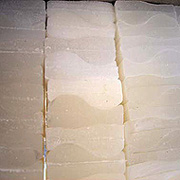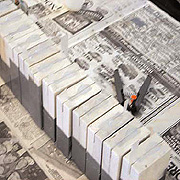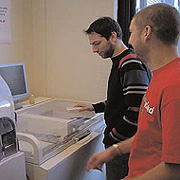|
Finally, the object is of special importance. To this end there is really very little we can recommend for the realization of the object. This has to rely primarily on the imagination, skills and resources available to your group. What is important to note is that the object can be anything, can look like anything and can feel like anything. Again, we recommend keeping costs low. The primary criterion for the object is that it will be mass-produced. This is not to say that each object is identical. This simply means that each object can be recognized as belonging to a larger family of objects. Some things to consider generally are: the associative meaning of the object, the aesthetic qualities of the object and the inherent value of the object. The associative meaning of the object is determined primarily by what it looks or feels like. I.e. when someone looks at this thing will they think of another thing and make, possibly, some narrative connection between the use of the object and this other thing? The aesthetic qualities simply mean the look and feel of the object in and of itself. Does the object blend with its environment? Does it stand in contrast to its environment? Does it feel comfortable or cause discomfort. These are qualities related directly to sensation and perception, regardless of their associative meaning. Finally, the inherent value can be determined by two factors. The monetary value as determined not only by its cost, but also by whatever values attributed to it by any "market" relative to certain individuals or communities. Step 2. Our Project. Our community was the List Gallery at MIT. Our budget was $150 plus whatever money we contributed individually. The object we fabricated was a transluscent silicon sheath, sized to fit into the palm of your hand. Within this sheath was a folded bill, either $1, $5 or $10. Each sheath was fabricated from a plaster mold which was made on a 3-D printing machine. Our object was presented to each subject—a gallery visitor—with no instructions other than for them to do as they wished with it. We fabricated about 100 objects. The objects were set up at the reception desk of the List with instructions for visitors to take one. From that point visitors were free to do with them as they pleased. Our predicted routine for these objects was that people would hold them as they passed through the gallery. They would investigate them and find the money inside. On exiting the gallery there was a donation box. The slot in the donation box clearly mirrored the shape of the silicon sheath. Our expectation was that visitors would then make a decision whether to keep the money or donate it to the gallery. As well, it was expected they would return the sheath into the slot. |
    |